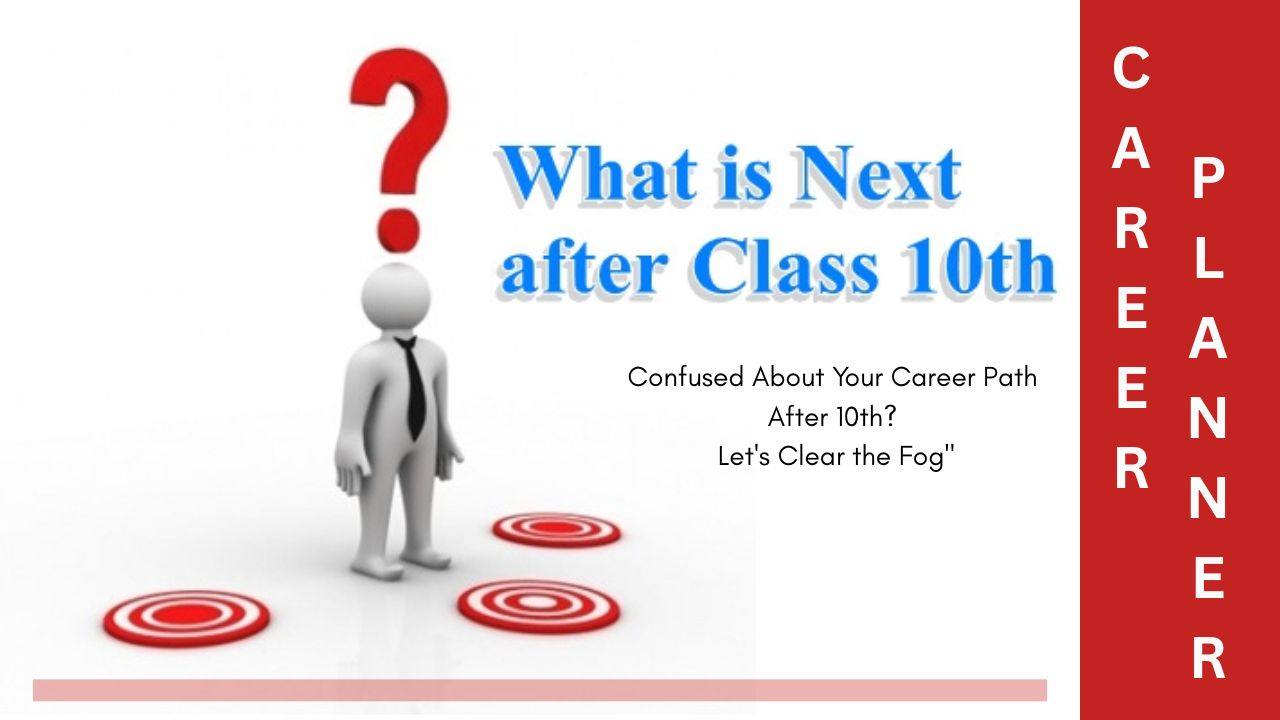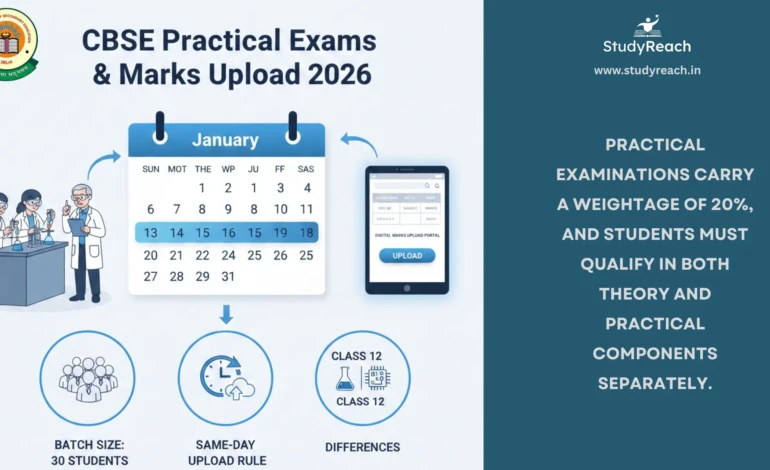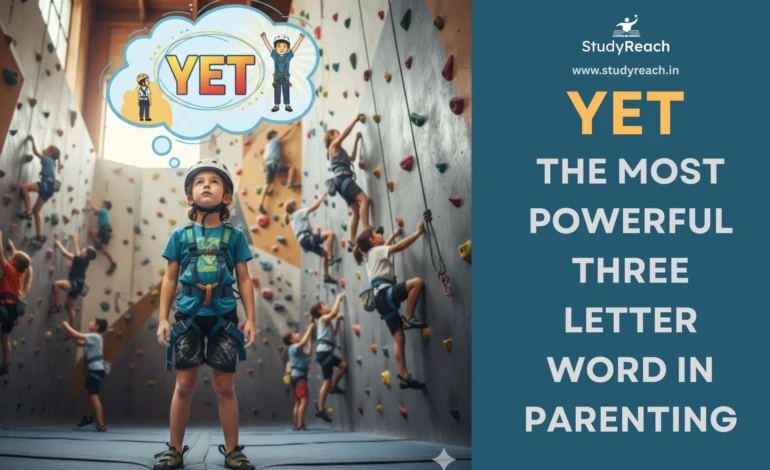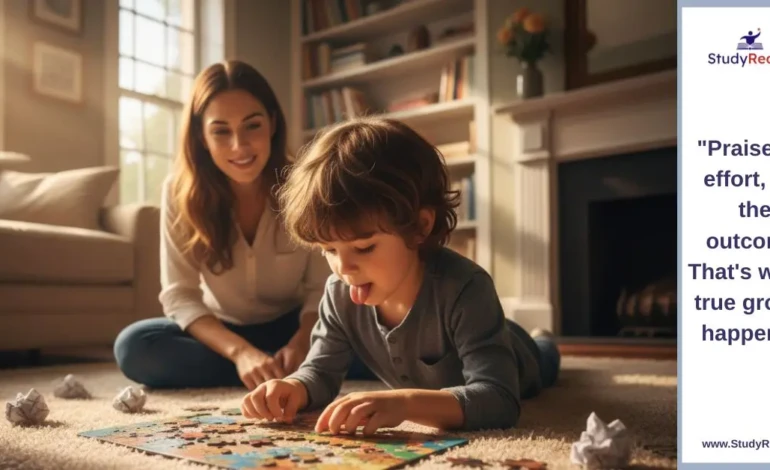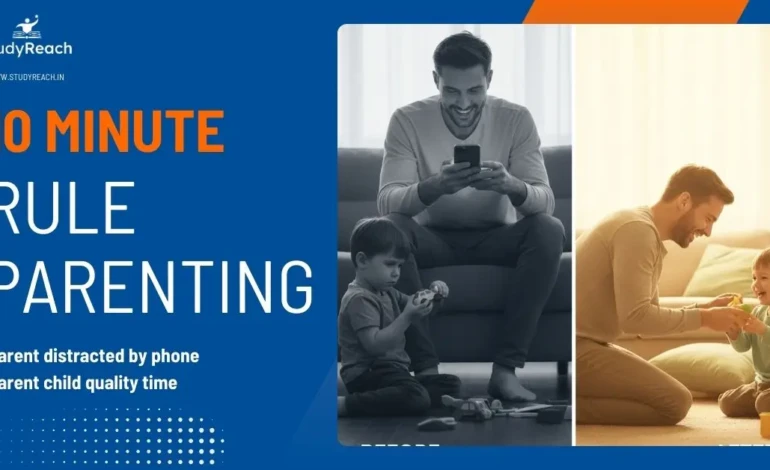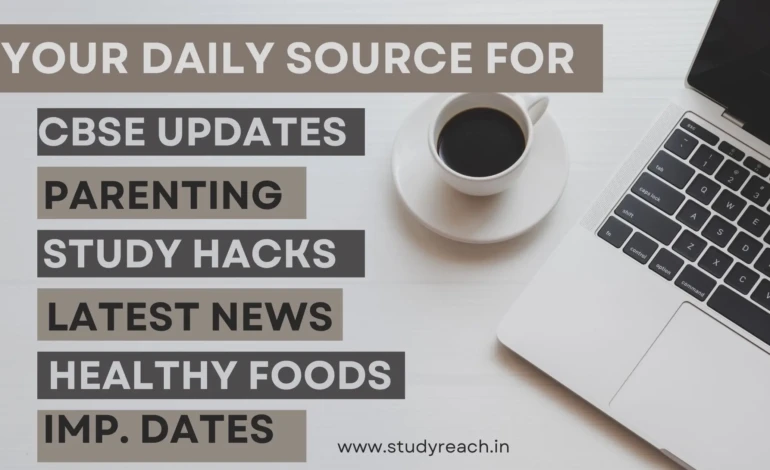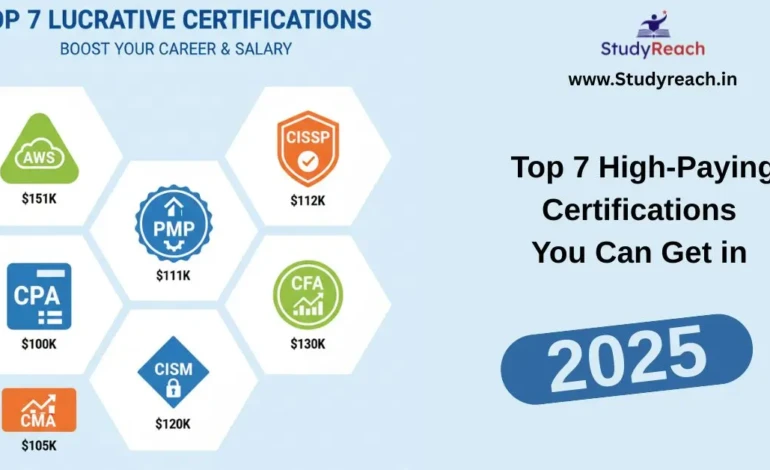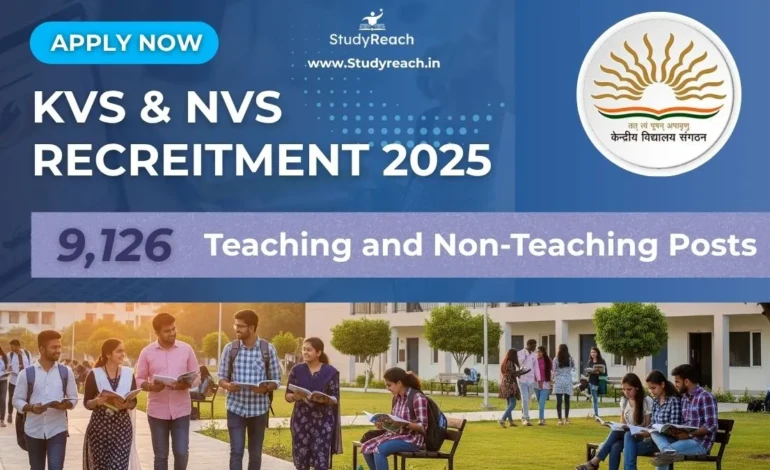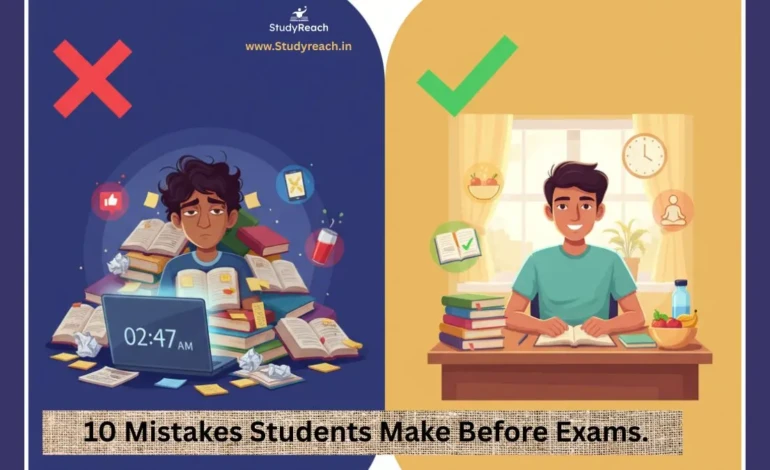PTM: How to Make Parent-Teacher Meetings More Effective | StudyReach
Shailendra Porwal
- September 21, 2023
- 14 min read
- 249 Views
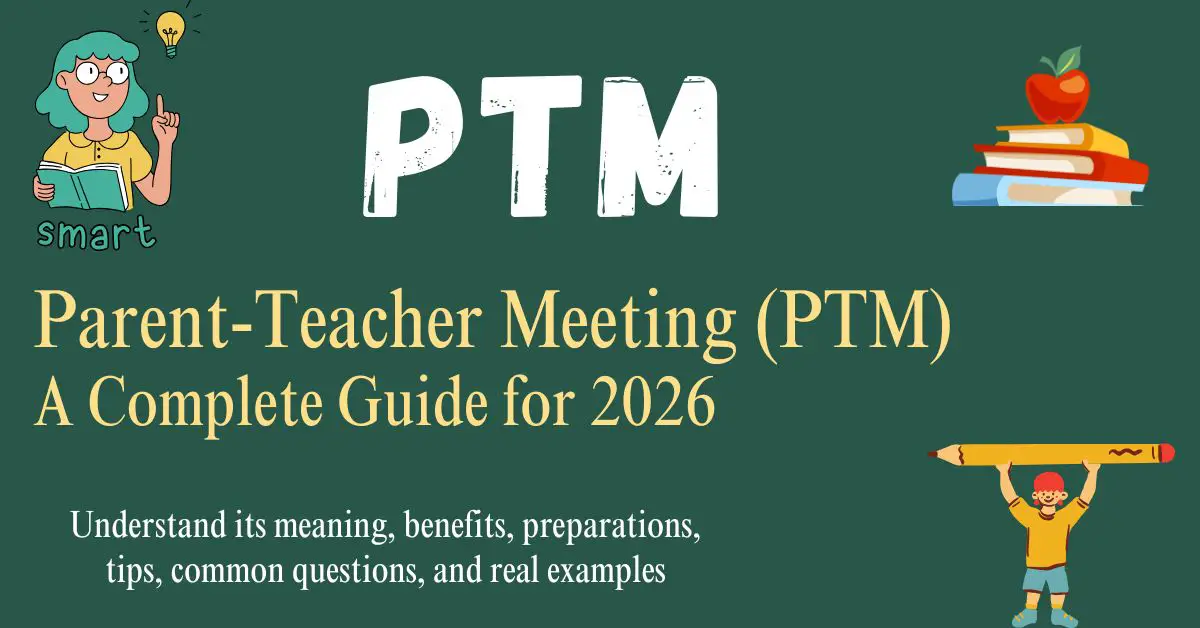
Introduction :
Parent-Teacher Meetings (PTMs) serve as one of the most effective mechanisms for schools to engage parents in their child’s educational journey. They are not merely a formality; rather, they represent a collaborative effort between parents and teachers aimed at supporting the child academically, socially, and emotionally.
In this article, we will delve into all aspects of PTMs—defining what they are, discussing their significance, outlining how to enhance their effectiveness, and providing advice for both parents and educators.
What is a Parent-Teacher Meeting?
A Parent-Teacher Meeting (PTM) is a prearranged discussion between a child’s parents (or guardians) and the teacher to evaluate the student’s performance in school. These meetings are essential in ensuring that both home and school are aligned regarding the child’s development.
PTMs typically occur after every exam, although this may differ from one school to another.
How Schools Can Make PTMs More Effective
- Plan Ahead
- Share the PTM schedule in advance.
- Inform parents about the topics to be covered.
- Create a Friendly Environment
- Ensure parents feel welcomed and valued.
- Utilize straightforward language and minimize technical jargon.
- Be Honest and Positive
- Discuss both the child’s strengths and areas that require improvement.
- Emphasize solutions rather than merely highlighting problems.
- Listen to Parents
- Allow them ample time to express their thoughts.
- Take their feedback seriously.
- Follow Up
- Provide a summary of the meeting.
- Maintain communication with parents regarding their child’s progress.
Purpose of a Parent-Teacher Meeting
To evaluate the child’s academic performance
To gain insight into behavior and classroom engagement
To pinpoint strengths and areas that need enhancement
To address any learning or behavioral challenges
To foster a collaborative relationship between parents and teachers
To develop joint strategies for future advancement
Importance of PTMs in Today’s Education System
In an era where children allocate nearly equal time…
Parent-Teacher Meetings (PTMs) are one of the most effective tools schools use to keep parents involved in their child’s learning journey. It’s not just a formality—it’s a partnership-building exercise between parents and teachers to support the child academically, socially, and emotionally.
In this article, we’ll explore everything about PTMs—what they are, why they matter, how to make them effective, and tips for both parents and teachers.
Parents Role in PTMs
Before the Meeting:
- Review your child’s notebooks, report cards, and recent assignments.
- Have a conversation with your child about school—what they like, what they find challenging, or what they dislike.
- Write down any questions or observations you have.
During the Meeting:
- Make sure to arrive on time and respect the schedule.
- Listen attentively and feel free to ask questions.
- Bring up any concerns in a respectful and open manner.
- Share any pertinent information from home (like recent family matters or emotional changes).
Questions Parents Should Ask During PTM
- What are my child’s academic strengths and weaknesses?
- Is my child participating in class?
- How does my child behave with peers and teachers?
- Are there any noticeable changes in behavior or mood?
- How can I help my child improve at home?
- Is my child on track with the syllabus?
- Does my child show interest in extracurricular activities?
After the Meeting:
- Discuss what was talked about with your child.
- Celebrate their successes and discuss areas for improvement in a positive light.
- Implement the action plan that was agreed upon with the teacher.
Teachers Role in PTMs
Before the Meeting:
- Evaluate each student’s academic and behavioral history.
- Gather examples and data (such as test scores, attendance, etc.).
- Make sure the meeting space is inviting.
- Creating a Friendly Welcome Environment:
- PTM Board Decoration
- Themed Decorations: Select a theme that corresponds with the PTM’s goals or the curriculum. For instance, you might opt for a science theme and showcase student experiments and facts for a science-oriented PTM.
- Student Exhibits: Highlight artwork, projects, and accomplishments by students. This not only displays their skills but also fosters a sense of pride.
- Engaging Displays: Incorporate interactive features like a question board related to the topics being discussed during the PTM. This allows parents and students to engage and learn together.
- Educational Posters: Add informative posters about school policies, key dates, and educational resources. This helps keep parents informed and involved.
During the Meeting:
- Start with something positive about the student.
- Be truthful yet kind when addressing challenges.
- Provide specific examples (e.g., “He struggles with multiplication” instead of “He’s weak in math”).
- Take notes and respond to all parent inquiries.
- Recognizing Achievements – Inspiring Excellence
- The Impact of Recognition: Recognition is akin to sunlight for a growing plant. It offers nourishment, encouragement, and a reason to aim for greater achievements. When high-achieving students are acknowledged and rewarded, several important outcomes arise.
After the Meeting:
- Keep records of key points discussed.
- Track the agreed action items in the upcoming weeks.
- Remain open to further discussions.
Crafting a Welcoming Atmosphere: PTM Board Decoration
- Student Quotes: Display motivational quotes or statements from students about their learning experiences. This personal touch adds warmth to the decor.
- Bulletin Board Borders: Use colorful borders and attractive fonts to make the display visually appealing. Ensure that it’s well-organized and not cluttered.
- Student Portfolios: Showcase student portfolios or folders containing their best work. Parents can browse through these during their visit.
- Interactive Whiteboard: If available, use an interactive whiteboard to display dynamic content like videos or presentations related to the curriculum.
Remember to keep the decoration relevant to the PTM’s purpose and to update it regularly to reflect current achievements and topics. A well-decorated board can enhance the overall PTM experience for parents and students.
“The beautiful thing about learning is that no one can take it away from you.”
“Quotations have the power to inspire and uplift. Incorporate motivational quotes into your PTM presentations and written materials. They can serve as a source of encouragement for both parents and students. Such quotes remind everyone of the enduring value of education and the collaborative effort required for a child’s growth”
“Good communication between parents and teachers is essential for the success of our children.”
“Parents and teachers working together create a strong foundation for student success.”
“As parents and teachers, we share a common goal of helping our children reach their full potential.”
Essential Elements for a Successful PTM
Welcoming – The Significance of a Warm Welcome of Parents
Upon their arrival at the PTM venue, parents should experience a genuine and warm welcome. This initial interaction is the foundation upon which the entire PTM experience is built. Here’s why it matters:
1. Fostering a Positive Atmosphere
A warm welcome creates a positive atmosphere that puts parents at ease. It signals that their presence is valued and that the school is committed to open and friendly communication.
2. Setting Expectations
During this welcome phase, you can set clear expectations for the PTM. Parents should understand that the purpose extends beyond a cursory exchange of pleasantries; it’s an opportunity for substantive discussions.
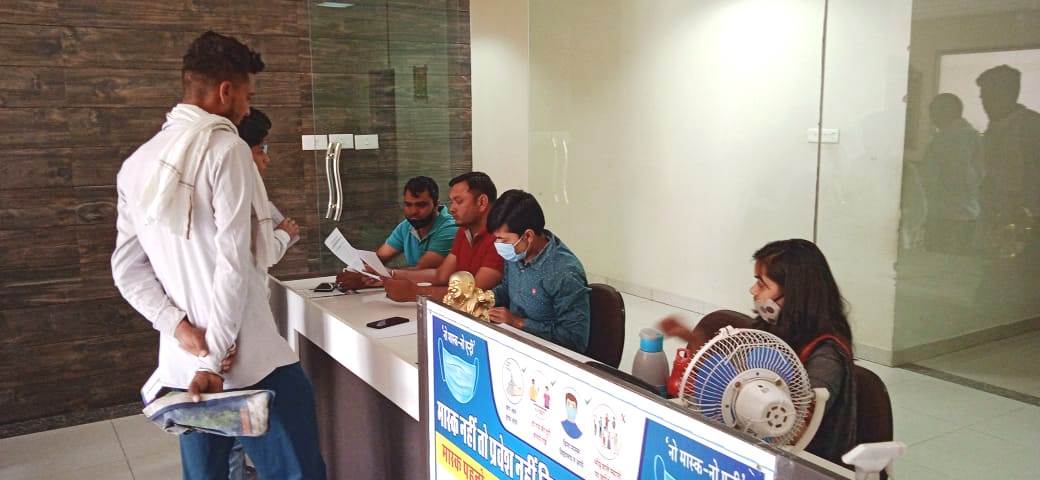
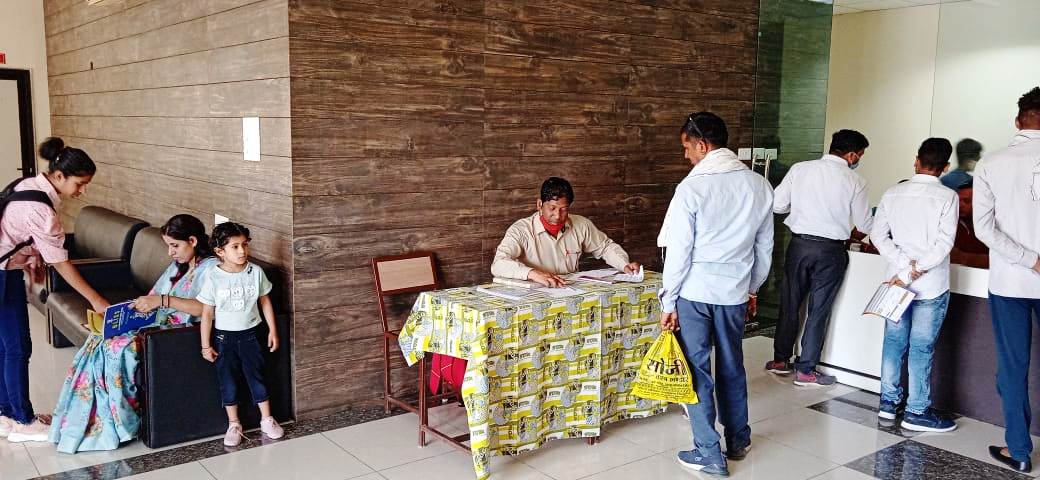
The PTM Format: A Valuable Tool
As part of this welcoming process, it’s highly beneficial to provide parents with a PTM format or agenda. This document serves as a roadmap for their PTM journey, and its importance cannot be overstated.
Meeting with Class Teachers
The format outlines the need for parents to meet with the class teachers. This serves the purpose of discussing the overall progress and conduct of their child in the class. It’s an opportunity for teachers to provide insights into the child’s academic journey and behavior within the class environment.
Interaction with Subject Teachers
Beyond class teachers, the PTM format also encourages parents to meet with subject teachers. This is particularly significant because it allows for more specialized discussions. Parents can gain insights into their child’s performance in specific subjects, identifying strengths and areas that may require additional attention.
Meeting with the Principal
Lastly, the format includes a slot for parents to meet with the Principal. This meeting holds paramount importance as it provides parents with an opportunity to discuss broader issues, school policies, and future plans. It’s a chance to voice concerns, seek clarifications, and engage in constructive dialogue with the school’s leadership.
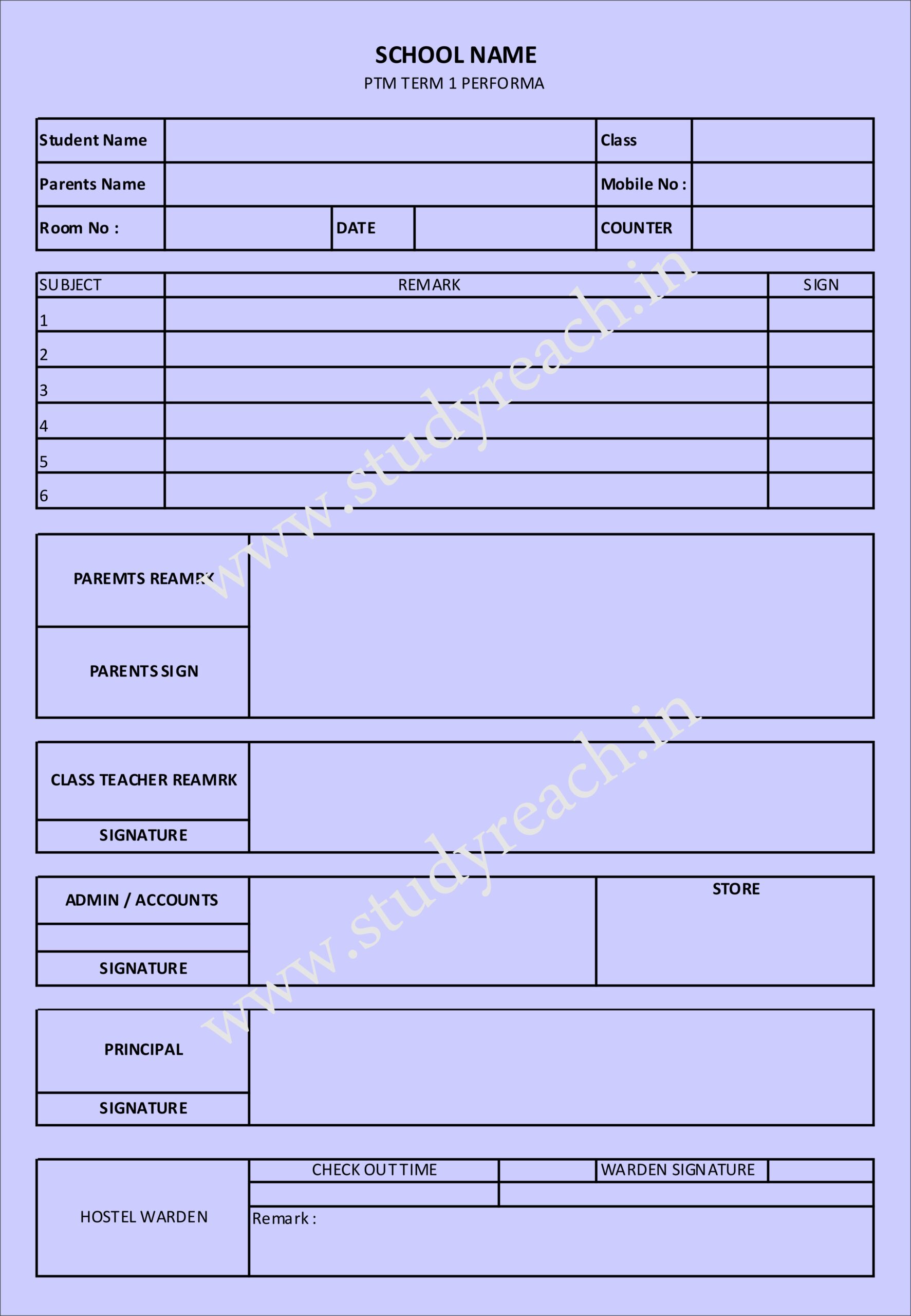
Tracking and Follow-Ups
One of the key benefits of the PTM format is its role in tracking discussions and ensuring follow-ups. Each meeting with a class teacher, subject teacher, or the Principal can be documented in the format. This documentation serves several purposes:
Ensuring Accountability
By having teachers and the Principal sign off on the PTM format, accountability is established. It ensures that discussions took place as planned and commitments were made.
Facilitating Follow-Ups
After the PTM, the format can be referred to for follow-up actions. If any specific actions or interventions were agreed upon during the meetings, the format acts as a reference point to track progress and ensure that these actions are implemented.
In essence, welcoming parents with a clear PTM format and encouraging them to meet with class teachers, subject teachers, and the Principal serves the purpose of fostering meaningful and comprehensive discussions about a child’s education. It empowers parents to gain a holistic view of their child’s progress, allows them to address specific concerns, and opens the door for collaboration between home and school to support the child’s growth and development.
Real-Life Example: A PTM Scenario
Riya, a 7th-grade student, experienced a sudden decline in her test scores. Her parents assumed she was merely distracted. During the PTM, her class teacher mentioned that Riya appeared unusually quiet and withdrawn in class. With this information, the parents sought advice from a counselor and found out that Riya was dealing with anxiety caused by peer pressure.
This PTM enabled the parents to uncover an issue they were previously unaware of—and take prompt action.
Related Article
Psychometric Testing in Schools-What It Is and Why It Matters.
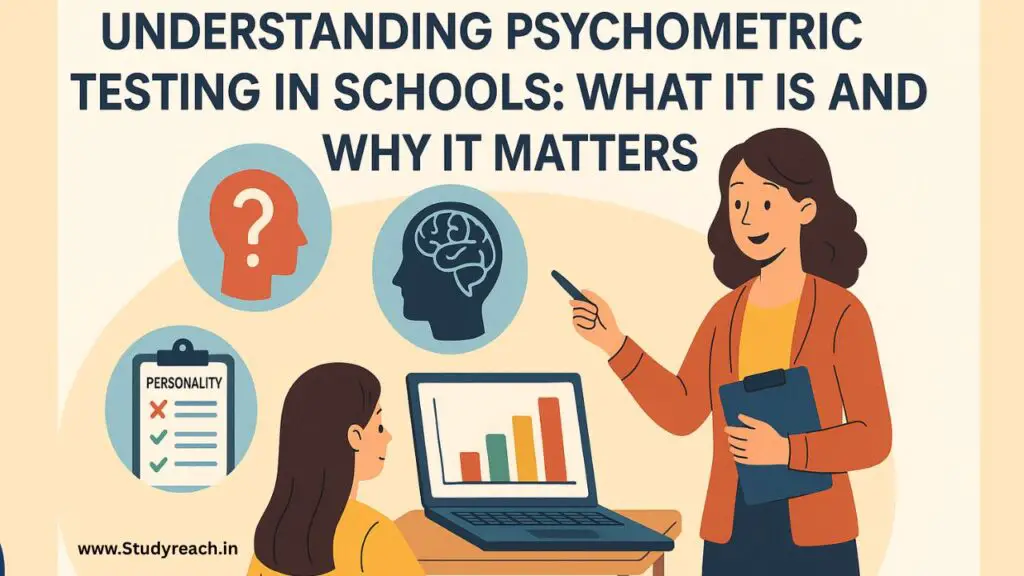
How Parent-Teacher Meetings (PTMs) Enhance Student Performance
Parent-Teacher Meetings (PTMs) are not just standard school events—they are impactful tools that influence a child’s academic path. When parents and teachers unite with a common purpose, students gain benefits that extend well beyond grades.
Let’s delve into how PTMs can positively affect student performance and overall growth.
- Tailored Support for Each Child
Every student is distinct. PTMs provide a platform for teachers and parents to share insights about a child’s strengths, challenges, and learning preferences. This collaboration fosters a tailored support system—both at school and at home.
Example: If a teacher observes that a student struggles with concentration, and the parent reveals that the child excels with structure, they can collaborate to establish a consistent routine.
- Early Identification of Learning or Behavioral Concerns
PTMs present an excellent chance to spot issues early—whether it’s a learning challenge, emotional strain, or behavioral trend. Early intervention allows for timely support, such as counseling, remedial classes, or special education services.
- Strengthened Home-School Collaboration
When students witness their parents and teachers collaborating as a team, it conveys a strong message: “We’re all here to support your success.” This sense of togetherness often results in better behavior, enhanced attendance, and a more positive outlook on learning.
- Clear Goal Setting and Accountability
PTMs provide an excellent opportunity for establishing academic and behavioral objectives. When expectations are communicated clearly—and there is alignment between home and school—students tend to remain focused and take responsibility for their own progress.
- Boost in Confidence and Motivation
Encouragement from both parents and teachers can significantly enhance a child’s self-esteem. When students feel supported and motivated, they are more inclined to stay engaged, put in more effort, and recover from challenges.
Building Long-Term Parent-Teacher Relationships
A PTM is not a one-time task. Here’s how to stay connected:
- Use school apps or communication platforms to stay updated
- Attend school events to stay engaged
- Send regular messages or emails for minor updates
Appreciate teachers for their efforts—it goes a long way.

Recognizing Achievements – Inspiring Excellence
In the intricate tapestry of education, acknowledging and celebrating the achievements of students play a pivotal role. It is not merely a formality but a powerful tool that can propel students towards excellence and motivate them to persistently pursue their educational journey. One such avenue for recognition is the act of awarding prizes to the top three students in the class. This simple yet profound gesture goes beyond a mere pat on the back; it has far-reaching implications.

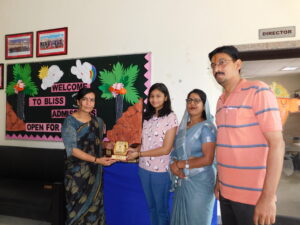
The Power of Recognition
Recognition is like sunlight to a budding plant. It provides nourishment, encouragement, and a reason to strive for higher goals. When top-performing students are recognized and rewarded, several significant outcomes emerge.

The Ripple Effect
The act of awarding prizes to the top three students is not confined to the moment of recognition. Its impact ripples through the entire educational ecosystem:
Parental Involvement
Parents often take pride in their child’s achievements. When their child is among the top three, it fosters a sense of involvement and engagement in their child’s education. They become active participants in their child’s academic journey.
In conclusion
Awarding prizes to the top three students in the class is not just a ceremony; it’s a catalyst for growth and excellence. It motivates, inspires, and fosters a culture of achievement within the school. By acknowledging the hard work and dedication of students, we not only celebrate their achievements but also lay the foundation for a brighter educational future.
Creating Memories- Capturing the Essence of PTMs
Amidst the discussions, acknowledgments, and valuable insights that Parent-Teacher Meetings (PTMs) offer, there exists a beautiful opportunity to create lasting memories. A dedicated space, often referred to as the “selfie counter,” can be set up to encourage parents and students to capture these cherished moments. This seemingly small addition to the PTM experience has a profound impact.
The selfie counter is more than just a photo opportunity; it’s a testament to the connections formed during PTMs. Here’s why it holds significance.
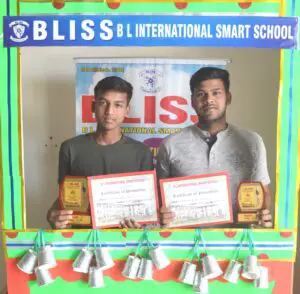
Conclusion – A Small Meeting, A Big Impact
Parent-Teacher Meetings are more than formal check-ins. They are golden opportunities to align school efforts with parental support. When done right, PTMs can positively shape a child’s academic and emotional journey.
Whether in-person or virtual, make your next PTM count—with preparation, open-mindedness, and teamwork.
============== FAQ ==============
What is the primary purpose of a PTM?
The primary purpose of a PTM (Parent-Teacher Meeting) is to facilitate communication between parents and teachers, discuss a child’s academic and social progress, and collaborate on strategies for improvement.
How can I make PTM board decoration engaging?
To make PTM board decoration engaging, consider themes, use vibrant visuals, showcase student achievements, and align the decor with the meeting’s purpose or curriculum.
Why are inspirational quotations important in PTMs?
Inspirational quotations add motivation and positivity to PTMs, inspiring both parents and students to stay committed to the educational journey.
How to write PTM Feedback?
When giving feedback during a PTM, focus on being constructive, specific, and solution-oriented. Address the personal and academic development of your ward cover both strengths and areas for improvement. Give your actual suggestions.
How can PTMs strengthen the parent-teacher-student partnership?
PTMs strengthen the partnership by promoting open dialogue, emphasizing collective responsibility, and fostering a collaborative approach to a child’s education.
What if I can’t attend the PTM?
Inform the school in advance. Some schools provide alternate dates or virtual options.
Should students attend PTMs?
Yes, in higher grades, students are often encouraged to attend and be part of the discussion.
Are PTMs only for weak students?
Not at all. Every child benefits when parents and teachers communicate.
How long does a PTM last?
Usually 5–15 minutes per parent, but longer if needed.

 To evaluate the child’s academic performance
To evaluate the child’s academic performance